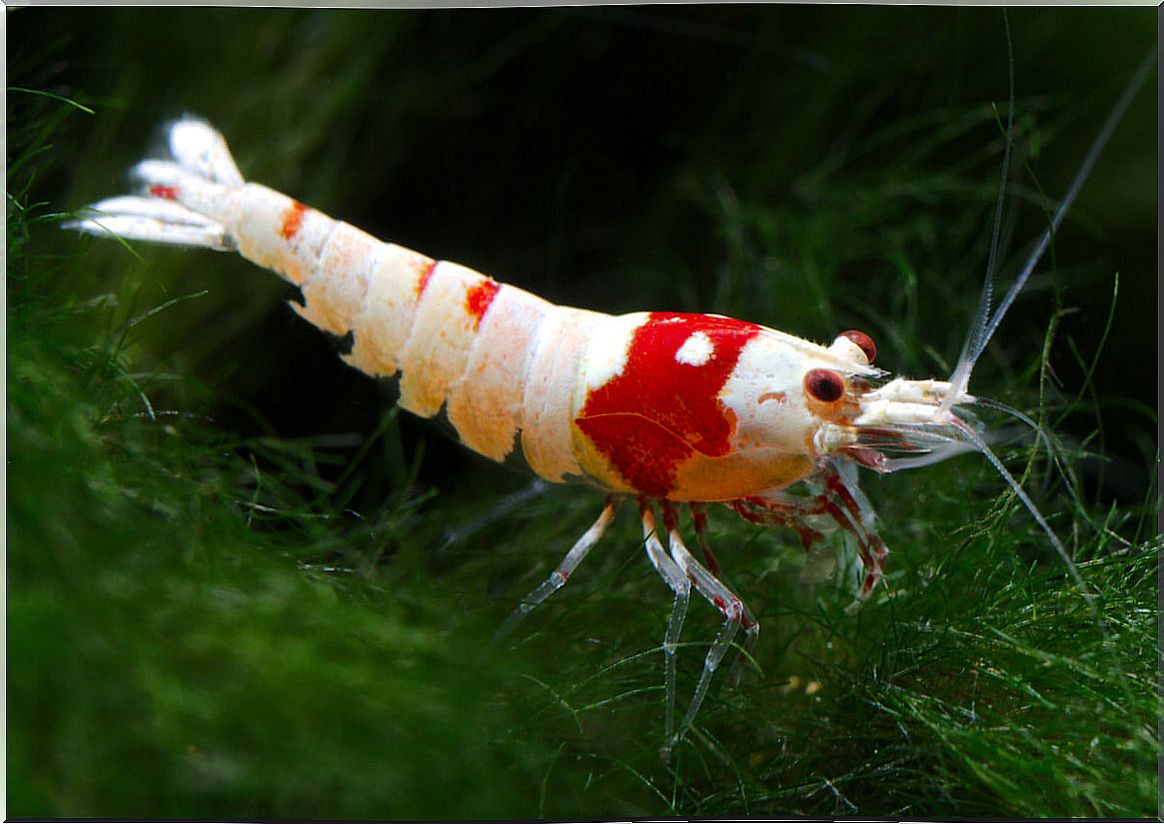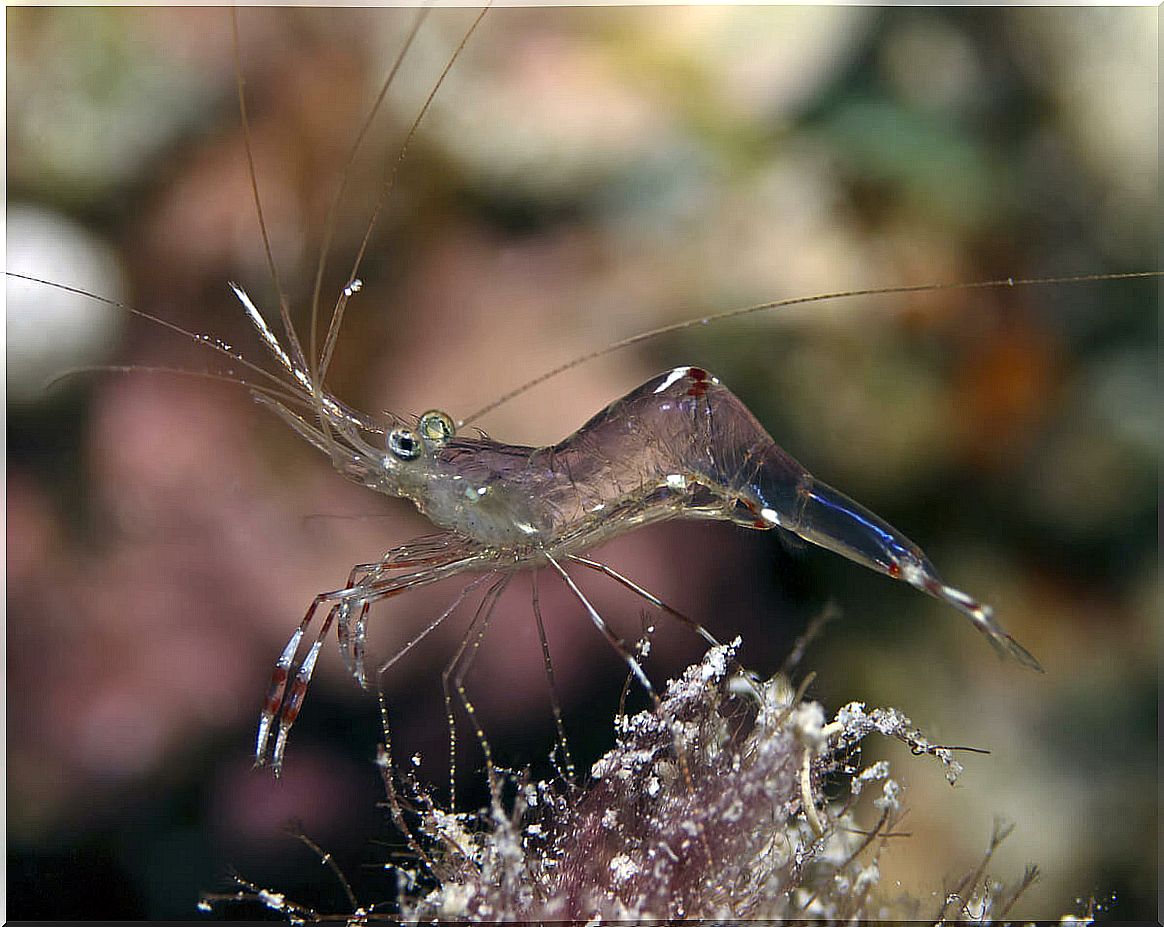The Carids: Where Can They Be Found?

Caridae are a group of decapod crustaceans ( Decapoda: Caridea ) made up of various species. In number, this taxonomic group is only surpassed by its relatives the crabs. Besides these, other close relatives are prawns and lobsters.
Commonly, carids are known as the popular shrimp. Its numerous species inhabit the bottom of the water in almost all aquatic environments in the world.
Thus, there is an immense diversity of shrimp that live in the sea, but also in brackish and fresh waters on coasts, estuaries, rivers and lakes. If you want to know more about these cute invertebrates, keep reading.
An expanding group
Worldwide, around 3,500 species were recognized in 2011, but this taxon is continually growing. Approximately 770 – 800 species live in fresh water and inland waters, for example in underground caverns. Freshwater carids make up one fifth of the world’s shrimp diversity.
Thus, we can affirm that carids are widely distributed around the world, from the equator to the polar regions. Regarding the habitat, they are found in various ecological niches, from shallow or moderately deep coastal waters.
We also find pelagic species (middle ocean waters up to 200 meters deep), but others are considered benthic (that inhabit the seabed, greater than 5,000 meters deep).
In this context, it is difficult to estimate the true magnitude of the number of shrimp species, as new taxa continue to be described each year. Among the freshwater species, two genera are numerically dominant: Caridina and Macrobrachium . However, it can be expected that many more species are waiting to be discovered.

The special case of commensal carid species
Interestingly, the existence of some species of carids that live in a commensal relationship with sponges and other invertebrates has also been reported . Commensalism, although a widespread way of life in marine shrimp species, is rare to find in freshwater species. So far two are known:
- Limnocaridina iridinae, which lives in the mantle cavity of a unionida clam ( Unionidae is a family of bivalve mollusks) from Lake Tanganyika in Central Africa.
- The Caridina species , which lives in mutualism with freshwater sponges in Lake Towuti, Sulawesi, Indonesia.
Shrimp and prawn anatomy is very similar, but not the same
Both creatures have a body divided into three parts: cephalothorax, abdomen and telson (the tail shaped like a small fan). This tail allows them to swim quickly backwards. Like all decapods, they have 10 legs specialized in carrying out different functions: walking, feeding or reproducing.
In addition, in both the respiration is gill and have a chitin exoskeleton. Although they may be colored, they are often semi-transparent, making them difficult to see in the water. They have three pairs of sensory antennae and strong maxillae in the cephalothorax.
Physical differences between shrimp and prawns
In prawns, they are present in marine waters and very few species in fresh water, branching gills in the shape of a tree and antennae that can double the size of the body.
They also have six clamps, one at each end of the first three pairs of legs. When looking at the exoskeleton, the first plate overlaps the second and the latter overlaps the third.
On the other hand, in shrimp the gills are leaf-shaped or filobranchiae. The antennae are relatively small, they do not exceed the size of its body. The third pair of legs never ends in a clamp, however, you can have clamps on the first and second pair, or only on the second pair.
What is the diet of carids?
In general, many species in this infraorder are filter feeders. However, many others are omnivorous, that is, they consume plant and animal matter.
Thus, it is known that they can eat crustaceans, mollusks, ophiuroids, algae, necrotic tissue of other organisms, various parasites and some other slowly moving benthic organisms.
It is important for ecological niches that carids consume carrion. For their work in consuming dead tissues or parasites of other species, they are often called cleaner shrimp.
It is interesting to know that species of the Alpheidae family , known as pistol shrimp, stun their prey before eating it by making a loud noise with one of their claws, producing a click through the water.

Shrimp are key to the life of all species
It is important to consider that due to their small size and great abundance, carids are natural prey for many predators around the world.
Its numerous species are the basis of the diet of seabirds, fish, crabs and many other marine species. Due to its dietary value for humans, its commercialization is very important in the economy of many countries.
The state of conservation
Recently, a total of 13 species of freshwater shrimp have been included in the IUCN Red Data Book.
The risk is greater for species that inhabit a single cave or cave system, as these systems are under threat of human invasion and groundwater contamination. So far, Syncaris pasadenae is the only shrimp species currently considered extinct.









